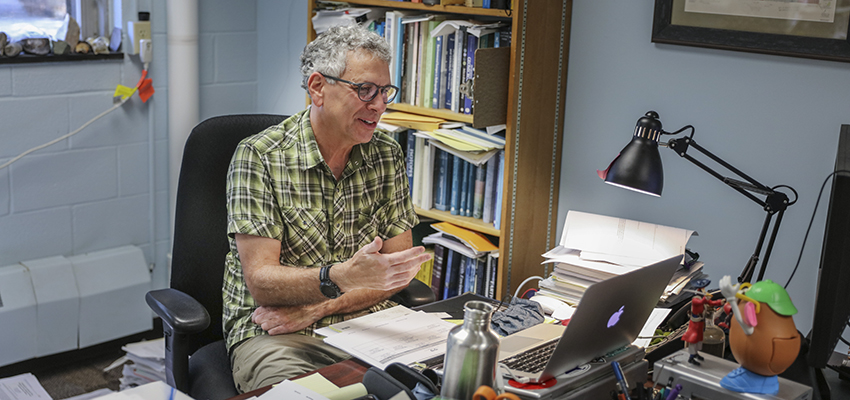
HWS News
12 March 2021 Diving into Oceanography
HWS students share their discoveries from this winter's exploration of the physical, chemical, geological and biological processes and patterns governing Earth's oceans.
During an intensive two-week course over winter break, Associate Professor of Geoscience David Finkelstein guided students through the scientific properties of oceans and their evolutionary and climatic impact.
In the J-Term Oceanography course, students explored the physical, chemical and geologic structures of oceans and their role in the carbon cycle, ocean circulation and global climate change. In addition to the evolution of the oceans through geologic time, the class studied different environments of biological productivity and their susceptibility to environmental change.
"Geoscience is all about integration," Finkelstein explains. In "Oceanography," he challenged students to integrate a range of scientific disciplines to understand how oceans work over the scale of hours, days, and seasons to decades, centuries and millions of years.
"Focusing on the mechanics and evolution of the oceans allowed students to integrate global climate change, geology and biology to see how the oceans amplify or mute the signals of change over long-time scales," Finkelstein says.
In their oral presentations, students examined these themes in detail, exploring everything from tectonic activity on the ocean floor to humpback whale migration to the proliferation of microplastics in the ocean.
A few examples include:
Light in the Ocean
By Lea Mateo Medina '22
Effects of Lower Surface Ocean pH upon the Stability of Shallow Water Carbonate Sediments
By Hunter Savignano '22
Constant in a Changing Ocean: Investigating one of natures paradoxes Humpback whale migrations are consistent in an evolving ocean
By Chloe Brown '21
Kaikoura Canyon: How tectonic activity creates (and disturbs) sites of biological productivity on the ocean floor
By Chloe Brown '21
